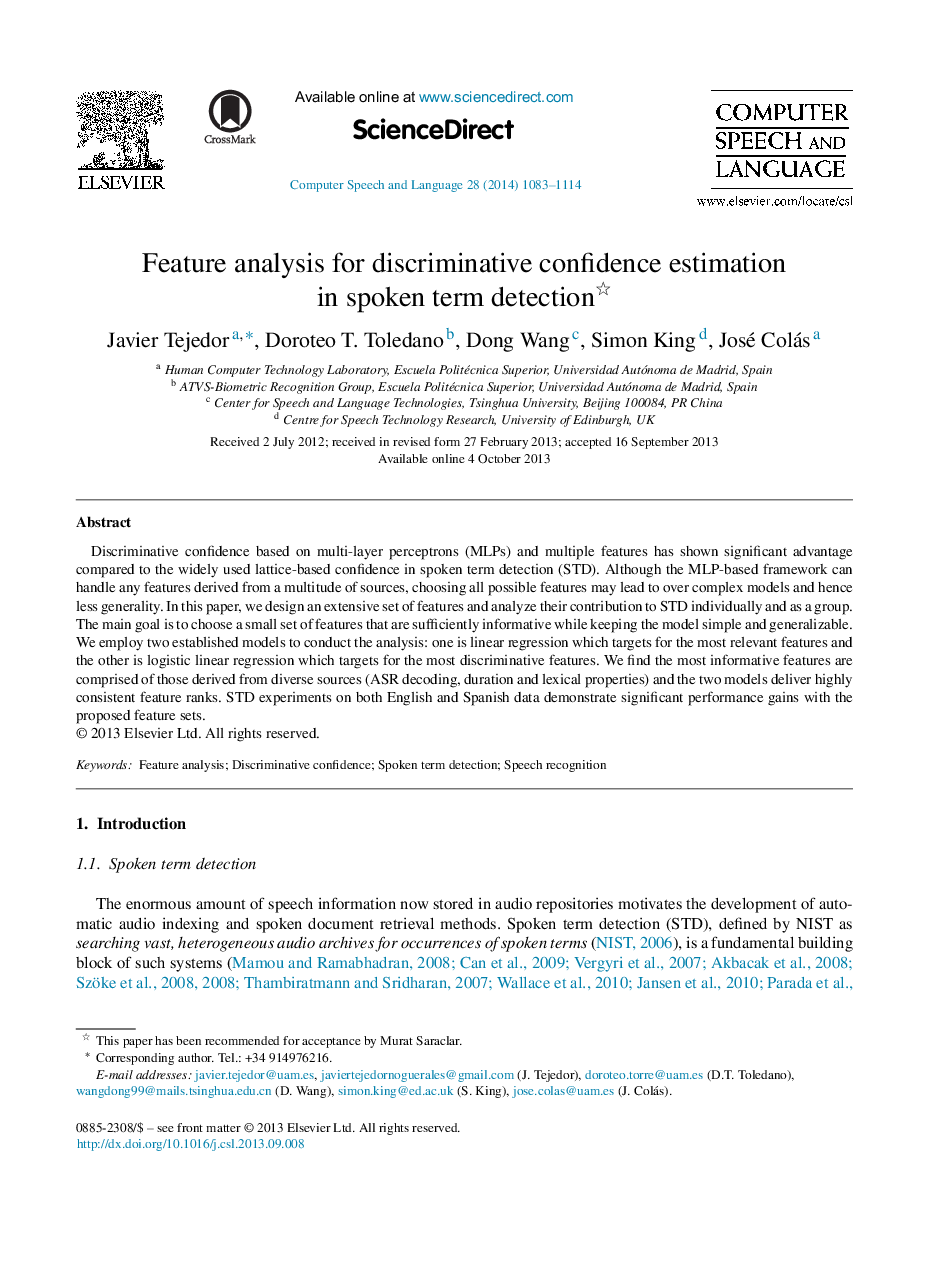| کد مقاله | کد نشریه | سال انتشار | مقاله انگلیسی | نسخه تمام متن |
|---|---|---|---|---|
| 558274 | 874889 | 2014 | 32 صفحه PDF | دانلود رایگان |
• Feature analysis for spoken term detection (STD) on English (meeting domain) and Spanish (read speech) data in a discriminative confidence estimation framework.
• Feature analysis is based on groups that are defined according to their information sources: lattice-based features, duration-based features, lexical features, Levenshtein distance-based features, position and prosodic features (pitch and energy).
• Feature analysis employs two well-known and established models: linear regression (a generative approach) and logistic linear regression (a discriminative approach). Individual and incremental analyses are presented for both models.
• Results demonstrate significant improvement with the 3–5 most informative features compared with using the single best feature for STD confidence estimation.
• The best feature set comprises features from different groups: lattice-based and lexical features are among the most informative groups in general, and duration and energy are more informative for read speech data.
Discriminative confidence based on multi-layer perceptrons (MLPs) and multiple features has shown significant advantage compared to the widely used lattice-based confidence in spoken term detection (STD). Although the MLP-based framework can handle any features derived from a multitude of sources, choosing all possible features may lead to over complex models and hence less generality. In this paper, we design an extensive set of features and analyze their contribution to STD individually and as a group. The main goal is to choose a small set of features that are sufficiently informative while keeping the model simple and generalizable. We employ two established models to conduct the analysis: one is linear regression which targets for the most relevant features and the other is logistic linear regression which targets for the most discriminative features. We find the most informative features are comprised of those derived from diverse sources (ASR decoding, duration and lexical properties) and the two models deliver highly consistent feature ranks. STD experiments on both English and Spanish data demonstrate significant performance gains with the proposed feature sets.
Journal: Computer Speech & Language - Volume 28, Issue 5, September 2014, Pages 1083–1114
